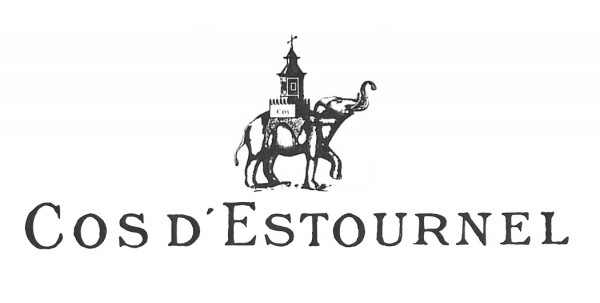
History
Louis Gaspard d’Estournel inherited Cos and Pomys in 1791. He expanded his vineyard from 14 to 45 hectares. Throughout his lifetime Louis Gaspard d’Estournel remained closely involved in the management of Cos d’Estournel. He fought endlessly to promote his estate, even if it meant having to sell it to finance his debts before acquiring it once again. Louis Gaspard d’Estournel would live to see his wine designated a Deuxième Grand Cru du Médoc by the negociants of Bordeaux but sadly enough, he passed away two years before the 1855 Bordeaux Classification officially recognized Cos d’Estournel as a Second Growth Estate.
Owner of Cos d’Estournel since 2000, entrepreneur Michel Reybier is a simple and discreet man. Moved by the extraordinary personality of the estate and the audacity of its founder, his decision to acquire was not motivated by financial considerations alone. For him, the choice was clear: it would be “Cos and only Cos.” Today he remains deeply attached to his vineyard. “At first glance, I was attracted by the history of the place. And then when I visited the estate, I felt instantly how unique, how exceptional it is.” Michel Reybier is an active presence throughout the year and a major actor in the estate’s development. In this he resembles his predecessor Louis Gaspard d’Estournel, with whom he also shares a profound passion for Cos d’Estournel.
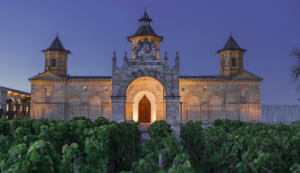
Terroir
Cos d’Estournel is ideally situated at the heart of an undulating landscape in the northern Médoc. A plateau of deep gravel comprises the core of the site. Gravelly and clayey, the two hills that slope downward from this point benefit respectively from eastern and south-southwestern exposures. These geologic features are completed by a clay vein running diagonally through the vineyard. Merlot is found to the east, on clay-limestone soils, while Cabernet Sauvignon is grown on the highest parts of the plateau, where drainage is ideal. A near miracle in geographic and geologic terms, Cos d’Estournel benefits from an unparalleled combination of soils and exposures. The northernmost village appellation of the Médoc, Saint-Estèphe is nestled between the Gironde Estuary and the Atlantic Ocean. More pronounced than elsewhere in the region, the resulting oceanic climate tempers extreme weather conditions; winters are less harsh and summer heat waves less intense. Ripening occurs gently, which favors complexity and freshness of aromas in the grapes.
The wind that often blows through the vineyard is also essential: by drying excess humidity and purifying the air, it allows grape berries to ripen on the vine in perfect health.
Today the vineyard occupies 91 hectares. Cabernet Sauvignon accounts for two-thirds of this precious mosaic of 61 plots, with a lesser proportion of the land dedicated to Merlot and a small proportion to Cabernet Franc and Petit Verdot. Nestled among the vine plants of the estate—45 years old on average—are certain very precious specimens, guardians of the vineyard’s heritage. Some of the oldest vine plants date back to the early 20th century. They continue to thrive, finding nourishment in the deepest layers of the land. Their grapes bring depth and structure to the wines of Cos d’Estournel, a testament to the incomparable complexity of the vineyard’s soil. The grapes from these mature plants are blended with the fruit of their younger counterparts to produce the Grand Vin of Cos d’Estournel. The average age of vine plants whose grapes are used in the estate’s first wine is 55 years old.
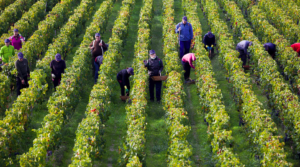 Keeping the oldest vine plants alive is crucial to perpetuating Cos d’Estournel’s rich heritage. Despite their low yield and the special care they require, these plants produce the grapes that shape the core identity of the estate’s wines. They also ensure the continuity of the vineyard through massal selection. Grapes are examined and tasted to identify the plants that most closely represent the singular qualities of the estate’s terroir. Their shoots are then used to grow young vines, so that the defining characteristics of Cos d’Estournel may be passed down from one generation to the next. It is a time-consuming process that requires great commitment, first during the selection process and then in caring for the young vines until they are mature enough for their grapes to be used in the Grand Vin. But this measure is essential to preserving the unique signature of the wines of the estate. Each vine-grower on the estate is entrusted with the same ten plots, or forty thousand vine plants, year after year. He or she follows them closely from one season to the next and is entirely responsible for their care.
Keeping the oldest vine plants alive is crucial to perpetuating Cos d’Estournel’s rich heritage. Despite their low yield and the special care they require, these plants produce the grapes that shape the core identity of the estate’s wines. They also ensure the continuity of the vineyard through massal selection. Grapes are examined and tasted to identify the plants that most closely represent the singular qualities of the estate’s terroir. Their shoots are then used to grow young vines, so that the defining characteristics of Cos d’Estournel may be passed down from one generation to the next. It is a time-consuming process that requires great commitment, first during the selection process and then in caring for the young vines until they are mature enough for their grapes to be used in the Grand Vin. But this measure is essential to preserving the unique signature of the wines of the estate. Each vine-grower on the estate is entrusted with the same ten plots, or forty thousand vine plants, year after year. He or she follows them closely from one season to the next and is entirely responsible for their care.
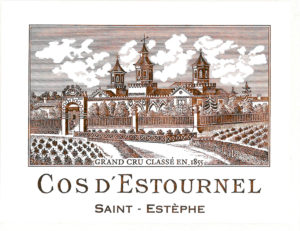
Château Cos d'Estournel Saint-Estèphe 2ème Grand Cru Classé
Overview: Cos d’Estournel has become, in the eyes of lovers of fine wine, the archetype of a certain style of masculine elegance in which immense power is combined with grace and smoothness. Impressive when young for the intensity of its structure and explosive fruit, Cos d’Estournel evolves slowly to arrive, when completely mature after.
Grape Blend: Cabernet Sauvignon, Merlot, Cabernet Franc
Maturation: Aging takes place in 80% new barrels
Cellaring Potential: 2012-2035
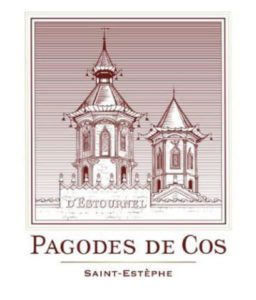
Les Pagodes de Cos
Overview: Les Pagodes de Cos is, strictly speaking, Cos d’Estournel’s “second wine”. The vines that produce it are eventually used for the “Grand Vin” which is an 1855 Grand Cru Classé. They are grown on the same terroir and are treated in the same way. They are simply younger and their roots have yet to grow to their full depth in the gravelly soil. Powerful, very aromatic, long on the palate, with a very persistent finish, Les Pagodes de Cos is a wine of refinement and pleasure.
Location: The terroir of Les Pagodes de Cos, which translates to “Hill of Pebbles”, is made up of gravel on top of the limestone plateau of Saint-Estèphe and is separated from the vineyards of Château Lafite by a small stream.
Grape Blend: Cabernet Sauvignon, Merlot
Vinification: Once the hand-picked grapes are brought to Cos’ modern cellar, which can be altered to provide the vinfication best suited to the vintage, the wine is fermented, blended, and aged in oak for 12 months.
Tasting Notes: Les Pagodes de Cos is a very elegant wine in the glass; it has a deep ruby coloring with a nose of red fruit, tobacco, and spices. The palate has great balance, allowing the wine to express its youthful intensity and sensual texture without becoming overpowering. The poise of Les Pagodes de Cos in the mouth showcases the exceptional winemaking of Jean-Guillaume Prats, described by Robert Parker as a “winemaking guru”. This wine effortlessly demonstrates the greatness of the Cos d’Estournel terroir and is a very special bottle of Bordeaux. It would make a magnificent gift, or be wonderful alongside a memorable dinner.
Cellaring Potential: To be drunk within 10 years of its bottling at the Château.



